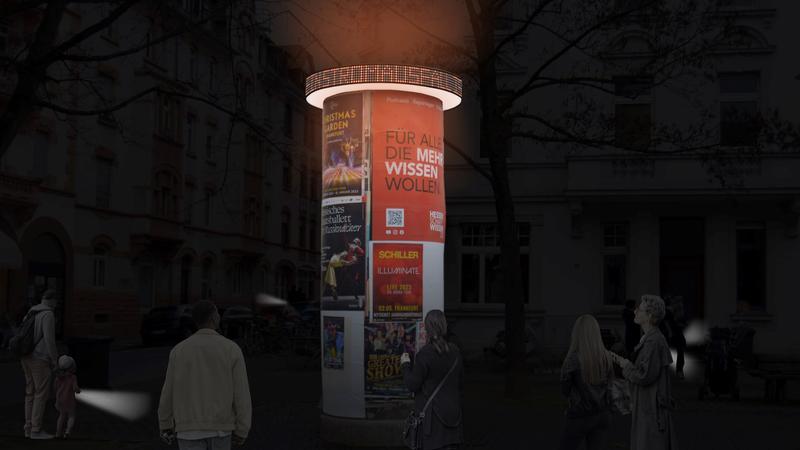An Advertising Pillar 4.0
Joachim Schulze interviewed in OOH! Magazine
Joachim Schulze interviewed in OOH! Magazine

A central question of emergenCITY research is how disaster management can possibly reach all people during the event of a crisis, especially in situations where there is no longer any power supply - and communication becomes particularly important for social togetherness at the same time. emergenCITY scientist Joachim Schulze, who teaches in the field “Design and Urban Development” at the Department of Architecture at TU Darmstadt, is working together with Annette Rudolph-Cleff on a solution for a new form of self-sufficient manageable crisis communication combining new ideas with an old part of city’s infrastructure: They are researching on an advertising pillar 4.0.
The advertising pillar offers a good starting point for new ideas around communication during crisis events, both technically and socially, as Schulze explains in the interview: “It is a piece of street furniture with a very long history and a high level of acceptance among the population. Nobody questions the advertising pillar, it’s part of the image of our cities.” Moreover, it is already strategically placed in the city in such a way that it reaches as many people as possible at prominent locations. Its round shape also holds a lot of technical potential, as Schulze explains: “The column has a small roof area at the top where photovoltaics could be integrated. Then it has a hollow space, because it consists of stacked concrete rings. You could perfectly install a large battery storage unit in there.”
Schulze imagines a revolving digital display in the upper crown section of the new advertising pillar 4.0, on which short texts or pictograms could be transmitted. For technical details, the project is still in consultation with information technology; for social acceptance, he emphasises that this display should also include a functioning during normal operation when no emergency has to be communicated. Thus, the idea of effective crisis communication could build on and connect to existing infrastructure. “The classic advertising pillar is really ideal for our needs. I was surprised by that myself,” Schulze sums up. The project is currently working on a prototype, which should be completed in the next few months.
The entire interview by Karin Winter with Joachim Schulze with further insides and details can be read here on page 14 to 20 or online in issue 1/2023 of the OOH! magazine.